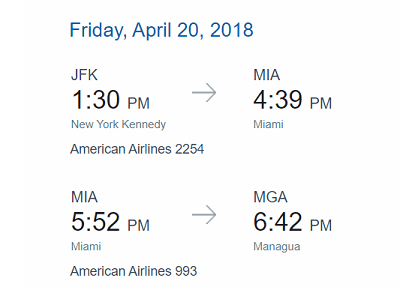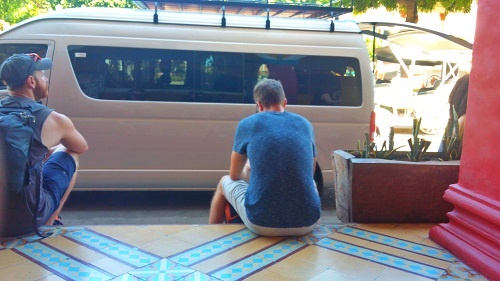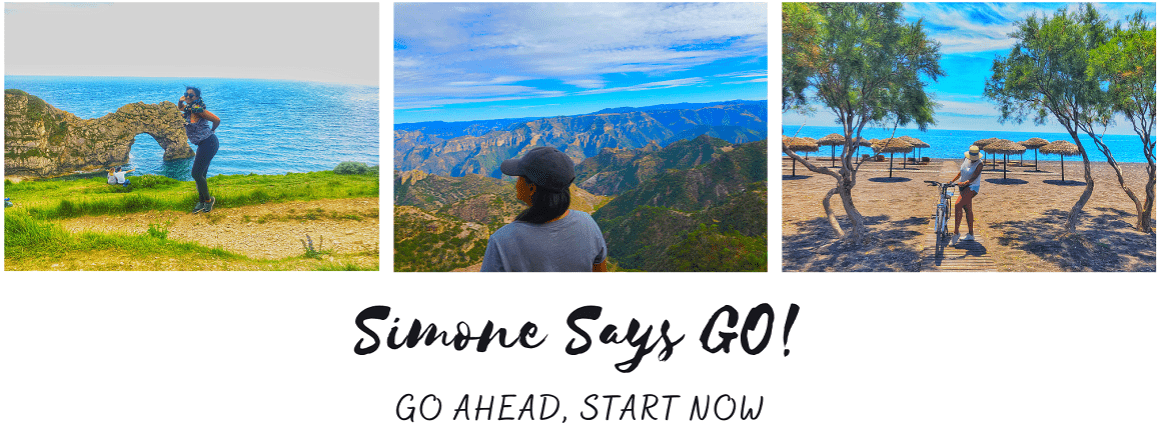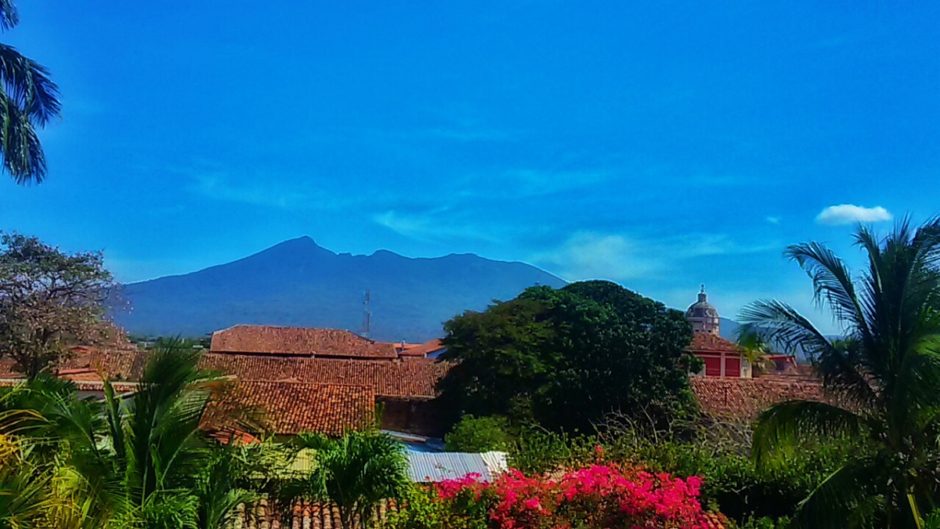Startling events were unfolding in Nicaragua. Miles away in the US, unsuspecting tourists – myself included – eagerly boarded an American Airlines flight bound to Managua, its capital city.
We were completely oblivious to the fact that we were headed directly into the storm – a fresh brew of civil unrest in Nicaragua.
It was Friday the 20th of April, 2018.
Nothing Out of the Ordinary
This trip to Central America was a last minute plan. I’d purchased the flight ticket the week prior, on Friday the 13th.

In the boarding area that day, there was the usual stream of airline activity – standard flight announcements and boarding process. The plane ride was uneventful.
I enjoyed a friendly chat with a young couple seated nearby, also headed to Nicaragua for the first time. Any passengers overhearing us or simply glancing over could tell – these turistas were pretty stoked for their upcoming adventure in Nicaragua!
And how could we not be? Nicaragua has a plethora of incredible sites and activities for everyone – beaches, waterfalls, lakes, volcano boarding, hiking, horseback riding, canyons, coffee farms, art galleries, museums, and of course, stunning architecture in the much-loved cities of Granada and Leon.
Airport Taxi to Managua, a Dilemma
Hours later, I walked out of Managua’s Augusto C. Sandino international airport and looked around for the taxis.
It was a bit odd. The place seemed desolate aside from a few drivers hastily searching for their pre-booked patrons.
This was the first indication that something was amiss.
I walked up to one gentleman and enquired about taxis into central Managua. He responded quite emphatically that, unless I had made prior arrangements, I would find no one willing to take me into town.
And then he enlightened me: there were massive protests happening right then in Managua. All of the taxis were leaving the airport. And, none would be arriving. This was it for the night.
“Protests? What protests?” I wondered.
I quickly checked online for news of unrest in Nicaragua. No mention on news media.
What was going on?
At this point, I still felt more bewildered than what should have been a logical feeling of panic.
Suddenly, I noticed the couple from the plane following their designated driver and I sprinted up to them.
“Hey, guys, could I share your taxi with you into central Managua?” I asked, somewhat beseechingly. I had enough common sense in the moment to understand that now was not the time to prove my solo travel prowess.
To my great relief, they agreed. They were as confused as I. We had heard nothing about civil unrest in Nicaragua prior.
We hopped in the taxi and prepared to make our way to the heart of the city, where our accommodations had been booked.
Later, we would learn that this was also where the heart of the protest activity was: Plaza de la Revolución. In those moments, the plaza was throbbing with activity, packed mainly with students demanding a revolution.
The taxi started off towards central Managua. Roberto, our brave driver, began to explain.
A Push for Reform, a Push Over the Brink
Nicaragua is led by President Daniel Ortega and Vice President Rosario Murillo, who is also his wife.
On Monday, April 16th, 2018, the government of Nicaragua, announced a social security reform. It would effectively lower pension benefits and raise income taxes nationally.
For many Nicaraguans, it was the straw that broke the camel’s back.
Demonstrations erupted soon after that announcement. On the Friday of my arrival, April the 20th, 2018 the situation ballooned. Thousands of Nicaraguans took to the streets to protest against their government.
At the helm of the protests were students. They would be coming up against both government forces and pro-government “para-police” groups.
For several days, the news of the civil unrest would not be reported in several media outlets.
The sole positive about this part was: my mum, in particular, would not hear anything about this. As far as she knew, I was blissfully holidaying in Nicaragua.
There would be bitter battles related to this theme of media censorship and freedom of the press.
Social media would become the workaround for getting news and updates. Using the #SOSNicaragua hashtag, folks would learn what was going on in other cities.
Barricades and Masks
It was not long into the car ride that we started to drive through major chaos.
Thousands of people lined the streets. Several were masked.
Tires burned in the middle of roads.
It was the type of shocking scene that I’ve turned on major news channels in the past and witnessed in countries with social unrest.
This, however, was no TV moment. This was very real.
I credit our driver, Roberto, for being the reason that us three formerly fresh faced, bushy tailed kids did not have full blown panic attacks in the taxi that night.
Roberto took the helm confidently and without traces of alarm. Something I found quite perplexing considering the live scenes playing out before us.
According to him, he’d lived through far worse back in the 80s when civil unrest upended Nicaragua for over a decade.
He proved to be a rather deft road crisis operator, swiftly averting course as barricades would come into view in the distance, and having quick exchanges with other drivers along the way. We weaved and worked our way into the downtown area.
We were stopped twice by masked gentlemen at barricaded points.
I’m not going to lie – in each instance, it felt like my heart had stopped too.
Roberto handled them expertly, pointing out in a friendly manner that he’d already dropped cash and left it with the “other guys behind”.
At no point did we dare whisk out our mobile cameras. No, Sir! We were already those very conspicuous tourists on the roads that night, albeit in a vehicle. We would not risk fanning the flames…
As history demonstrates, in highly charged situations as these, things can take an unexpected ugly turn. Even for the foreign actors.
But the protesters meant us no harm. These were regular Nicaraguan citizens who were angry at their government, not us. They let us pass through all of the barricades without incident.
Decision-Making: What Now?
We arrived safely at our respective accommodations, all boarded and locked up tightly.
Roberto took control again. He arranged to pick me up at 6am sharp, before folks started to stir. I’d leave Managua for Granada the following morning as planned, just considerably earlier.
He warned me that Granada would be “slightly better” than Managua but left me with a somber reminder: this was a national uprising. Demonstrations would be everywhere.
Arriving to Beautiful Granada
I fell in love with Nicaragua upon arrival in Granada. The city oozes old-world charm.



Later that week I would enjoy it briefly with daytime tours to must-see attractions in and around Granada such as the ChocoMuseo (the chocolate museum), Lake Apoyo, and nearby Masaya Volcano.


However, my initial stay in Granada lasted all of one night.
Nicaraguans to Tourists: Safety First
The first weekend of major protests anywhere has significant emotional implications.
It means that anger, hurt and frustration are fresh. Here in Nicaragua, they were mounting.
Also Read: Love and Rejuvenation, Courtesy Of an Anti-Racism Solidarity March
As in Managua, local tourism workers in Granada demonstrated a priority to keep visitors to their country safe.
Across the town, all tourists were instructed to return indoors by 3pm daily. And, remain inside.
And with good reason. As evening approached, things started to rumble.
That first afternoon in Granada, I was finishing lunch in a casual restaurant called La Frontera. As I chatted with the young waiter, his gaze eventually turned serious.
“If I were you, m’am, I would return to my country.”
The exchange lingered with me. Many backpackers were fleeing to neighbouring Costa Rica. Should I hunker down or do the same?
I was booked at Selina, the busiest lodging in town. Which meant that I’d be holed up with a sizeable group of people. Whether it was a false sense of security or not, this fact brought me comfort.
Selina is primely located in the main square of Granada. An ideal placement, right in the middle of the action.
Unfortunately, the “action” this time around was not the pleasant type and the central location of Selina turned out to be far from ideal.
That Saturday evening, the noises from protests and home-made weapons being launched reverberated throughout Selina Granada as clashes between citizens and the police ensued.
I met several other travelers at Selina Granada that evening. We all huddled by the pool and sipped tentatively on Toña beers, remaining calm but alert.
Relocated to San Juan del Sur, an Alternate Universe
The following morning, Selina instructed all folks with ongoing reservations to pack up. We were being moved to their sister property in San Juan del Sur on the coast.

This property was also beautiful – very resort-like. I spent the next three days in San Juan del Sur. It was an entirely different world out there.


Apart from a very subdued peaceful demonstration one evening, everything seemed…dare I say, normal?
How strange to be poolside lounging, hanging out in town (which was busy with tourists), and generally holidaying like nothing was happening in the rest of the country.
Leaving Nicaragua
I would end up briefly returning to Granada that Wednesday, three days after I’d left. There’d been a slight lull in the protest activity in the streets.
I managed to really enjoy the time in this beautiful colonial city over those last couple mornings and afternoons (it was still prudent to scoot back inside in the early evenings.)
On Friday, April the 28th, 2018, I departed as scheduled. It was exactly one week after my arrival.
And what a week it had been.
Much more would unfold in Nicaragua in the upcoming months. And years.
Mr. Ortega continues to preside over the country today.
Returning to Nicaragua
I look forward to returning to Nicaragua in upcoming years to explore the north of the country to areas such as Somoto Canyon and the coffee farms in Miraflor.
The combination of this country’s physical beauty as well as the beautiful spirits of its people really struck me, despite the dramatic events. The genuine interest which Nicaraguans took in ensuring our safety, as their visitors, was remarkable.
Nicaragua, I’ll be back.


Wow! Sounds like an amazing trip. Good to hear that it hot better after such a hairy start.
Certainly an unforgettable moment in an amazing country. Thanks for reading, Graham!
Glad tht you manage to relax and enjoy amidst the protest, especially that you are traveling solo. If it was me, I might book the next flight out from Nicaragua. But truly South America is a gem. I hope someday I can see any country in South America!
So happy I can say there was a silver lining to the trip thanks to the support of all the Nicaragua tourism workers! I sure hope you do, there are incredible memories waiting to be created.